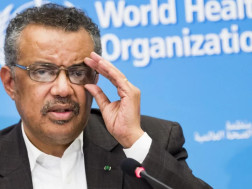“Pandemials” are at risk of becoming the double lost generation of the 21st century. The share of youth whose mental health deteriorated during the pandemic stands at 80%. Dire prospects is expected to force young workers to search for better opportunities abroad.
Pursuant to the Global Risks Report 2021 of the World Economic Forum, young adults (ages 15–24) around the world are experiencing their second major global crisis within a decade: they entered youth in the throes of the financial crisis, and are now exiting at the outset of a pandemic not seen in generations. They will face serious challenges to their education, economic prospects and mental health.
The outlook for this generation had already been diminished by environmental degradation, rising inequality (of many types - gender, intergenerational, economic and ethnic), varying degrees of violence, and social disruption from the tech-enabled industrial transformation. While the digital leap forward unlocked opportunities for some youth, many are now entering the workforce in an employment ice age.
In May 2020, the World Economic Forum’s COVID-19 Risks Outlook warned of a “next lost generation”. According to the Global Risks Perception Survey (GRPS), “youth disillusionment” is a top neglected risk that will become a critical threat to the world over the next two years. For younger respondents to the GRPS—the World Economic Forum’s Global Shapers — “youth disillusionment” is also a top blind spot. Hard-fought societal wins could be obliterated if the current generation lacks adequate pathways to educational and job opportunities.
Today’s youth already bear the scars of a decade-long financial crisis, an outdated education system, and an entrenched climate crisis, as well as violence in many places. Growing disparities Global fiscal policies following the Great Recession led to unequal prosperity gains across societies and generations. Large-scale financial stimulus packages were insufficient for younger generations to regain their footing, and austerity measures hampered investment in education, narrowing an important channel of mobility.
As a result, many young people have lingered in precarious service jobs that are vulnerable to major shocks. Pre-COVID, children and youths accounted for two-thirds of the global poor. COVID-19 has severely worsened this situation. While the share of youth is expected to increase across Africa—where the median age currently stands at just 19.7 years—and Oceania, Europe and South-East Asia will see declines in their youth populations by 2050,6 adding to the demographic challenges of unemployment and ageing in those regions.
The Global Shapers Community is the World Economic Forum’s network of young people driving dialogue, action and change. Their responses to the GRPS show higher aversion to risks than the multistakeholder sample. There are some similarities, however: Global Shapers also rate climate-related risks as the most likely and most impactful long-term risks and “youth disillusionment” as a top global blind spot.
The Shapers’ perceptions of critical threats to the world show a telling pattern. They see personal risks as immediate threats, macro risks in the medium term and fundamental geopolitical risks in the long term.
Top risks by horizon – Short term (0–2 years): “mental health deterioration”, “livelihood crises” and “infectious diseases”; – Medium term (3–5 years): “IT infrastructure breakdown”, “resource geopolitization”, “price instability”, and “asset bubble burst”; – Long term (5–10 years): “weapons of mass destruction”, “multilateralism collapse” and “state collapse”; Top blind spots – “Climate action failure”, “mental health deterioration” and “youth disillusionment”.
















